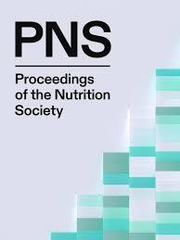No CrossRef data available.
Article contents
Dietary intakes of a shift working population with overweight and obesity: insights from the Shifting Weight using Intermittent Fasting in night shift workers study
Published online by Cambridge University Press: 21 May 2025
Abstract
Shift workers in Australia constitute approximately 16% of the workforce, with nearly half working a rotating shift pattern(1). Whilst poor dietary habits of shift workers have been extensively reported, along with increased risk of metabolic health conditions such as obesity, cardiovascular disease and diabetes compared to non-shift workers(2,3,4), studies on shift working populations rarely control for individual and lifestyle factors that might influence dietary profiles. While rotating shift work schedules have been linked with higher energy intake than daytime schedules(5), little is known about the impact of different night shift schedules (e.g., fixed night vs rotating schedules) on the diets of shift workers, including differences in 24-hour energy intake and nutrient composition. This observational study investigated the dietary habits of night shift workers with overweight/obesity and compared the impact of rotating and fixed night shift schedules on dietary profiles. The hypothesis was posited, that shift workers’ diets overall would deviate from national nutrition recommendations, and those working rotating shift schedules compared with fixed night schedules would have higher energy consumption. Participants were from the Shifting Weight using Intermittent Fasting in night shift workers (SWIFt) trial, a randomised controlled weight loss trial, and provided 7-day food diaries upon enrolment. Mean energy intakes (EI) and the percentage of EI from macronutrients, fibre, saturated fat, added sugar, alcohol, and the amount of sodium were evaluated against Australian adult recommendations. Total group and subgroup analysis of fixed night vs rotating schedules’ dietary profiles were conducted, including assessment of plausible and non-plausible energy intake reporters. Hierarchical regression analysis were conducted on nutrient intakes, controlling for individual and lifestyle factors of age, gender, BMI, physical activity, shift work exposure, occupation and work schedule. Overall, night shift workers (n = 245) had diets characterised by high fat/saturated fat/sodium content and low carbohydrate/fibre intake compared to nutrition recommendations, regardless of shift schedule type. Rotating shift workers (n = 121) had a higher mean 24-hour EI than fixed night workers (n = 122) (9329 ± 2915 kJ vs 8025 ± 2383 kJ, p < 0.001), with differences remaining when only plausible EI reporters were included (n = 130) (10968 ± 2411 kJ vs 9307 ± 2070 kJ, p < 0.001). These findings highlight poor dietary choices among this population of shift workers, and higher energy intakes of rotating shift workers, which may contribute to poor metabolic health outcomes often associated with working nightshift.
Information
- Type
- Abstract
- Information
- Copyright
- © The Author(s), 2025. Published by Cambridge University Press on behalf of The Nutrition Society


